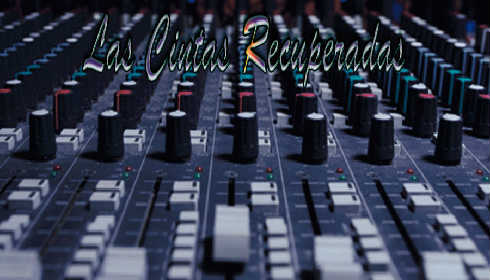 By Chris May
By Chris May Detroit-born trombonist Curtis Fuller stepped into the hard bop big league during the summer of 1957 with a flurry of high profile sideman dates and two albums as leader, New Trombone (Prestige, 1957) and The Opener, made within a few weeks of each other. The Opener, a lithe and soulful but largely forgotten disc, has been rereleased as part of Blue Note's Rudy Van Gelder Remaster series.
In 1957, the big league meant New York, where Fuller had arrived in April as a member of reed player Yusef Lateef's quintet. When Lateef and his band returned to Detroit, Fuller stayed behind. Within a month, he'd recorded four albums for Prestige—as a sideman with saxophonist Paul Quinchette, as co-leader with pianist Red Garland, on a Teddy Charles produced French horn project, and New Trombone. A month later, he recorded two albums for Blue Note—as a sideman with saxophonist Clifford Jordan and The Opener.
With the leader albums, Blue Note beat Prestige to the shops, rush-releasing The Opener in August, by which time Fuller's sideman credentials with the label also included albums with pianists Sonny Clark and Bud Powell. A month later, Fuller sealed his arrival on saxophonist John Coltrane's Blue Train (Blue Note, 1957).
When you're hot, you're hot. And 51 years after its original release, The Opener tells us why. Combining a fluent technique shaped by J.J. Johnson and Kai Winding, his own deep melodicism, a knowledge of trombone stylists stretching back to Tommy Dorsey and beyond, and an embrace of Coltrane's recent harmonic initiatives, Fuller fashioned an enduring jewel. He was assisted by a superb band comprised of rising stars saxophonist Hank Mobley, pianist Bobby Timmons, bassist Paul Chambers and drummer Art Taylor.
The two sides of the original LP followed a similar sequence, each starting, unusually, with a ballad (McHugh and Adamson's "A Lovely Way To Spend An Evening" and Bloom and Mercer's "Here's To My Lady"), followed by a bluesy Fuller original ("Hugore" and "Lizzy's Bounce"), followed by a fast-paced standard (Oscar Pettiford's "Oscarlypso" and George Gershwin's "Soon").
Producer Alfred Lion's decision to start each side with a ballad—recorded without Mobley—was daring, but he knew what he was doing. Fuller's warmth and lyricism, reflected in Timmons' solos, set the tone for the other four tracks. These are all brisk going on fast, but loose and carefree rather than urgent, and always on the melodic money. Hard bop's darker, more menacing moods are way off in the wings. The musicians sound at ease with each other and with life, and the feeling is infectious. This is hard bop served sunny side up.
Born in 1934 and still kicking, after The Opener Fuller went on to record a prodigious discography as sideman and leader, and the 1957 album brims with a promise later amply fulfilled. Released in a stereo edition by Mosaic in 1996, this RVG edition is in the original mono.
In 1957, the big league meant New York, where Fuller had arrived in April as a member of reed player Yusef Lateef's quintet. When Lateef and his band returned to Detroit, Fuller stayed behind. Within a month, he'd recorded four albums for Prestige—as a sideman with saxophonist Paul Quinchette, as co-leader with pianist Red Garland, on a Teddy Charles produced French horn project, and New Trombone. A month later, he recorded two albums for Blue Note—as a sideman with saxophonist Clifford Jordan and The Opener.
With the leader albums, Blue Note beat Prestige to the shops, rush-releasing The Opener in August, by which time Fuller's sideman credentials with the label also included albums with pianists Sonny Clark and Bud Powell. A month later, Fuller sealed his arrival on saxophonist John Coltrane's Blue Train (Blue Note, 1957).
When you're hot, you're hot. And 51 years after its original release, The Opener tells us why. Combining a fluent technique shaped by J.J. Johnson and Kai Winding, his own deep melodicism, a knowledge of trombone stylists stretching back to Tommy Dorsey and beyond, and an embrace of Coltrane's recent harmonic initiatives, Fuller fashioned an enduring jewel. He was assisted by a superb band comprised of rising stars saxophonist Hank Mobley, pianist Bobby Timmons, bassist Paul Chambers and drummer Art Taylor.
The two sides of the original LP followed a similar sequence, each starting, unusually, with a ballad (McHugh and Adamson's "A Lovely Way To Spend An Evening" and Bloom and Mercer's "Here's To My Lady"), followed by a bluesy Fuller original ("Hugore" and "Lizzy's Bounce"), followed by a fast-paced standard (Oscar Pettiford's "Oscarlypso" and George Gershwin's "Soon").
Producer Alfred Lion's decision to start each side with a ballad—recorded without Mobley—was daring, but he knew what he was doing. Fuller's warmth and lyricism, reflected in Timmons' solos, set the tone for the other four tracks. These are all brisk going on fast, but loose and carefree rather than urgent, and always on the melodic money. Hard bop's darker, more menacing moods are way off in the wings. The musicians sound at ease with each other and with life, and the feeling is infectious. This is hard bop served sunny side up.
Born in 1934 and still kicking, after The Opener Fuller went on to record a prodigious discography as sideman and leader, and the 1957 album brims with a promise later amply fulfilled. Released in a stereo edition by Mosaic in 1996, this RVG edition is in the original mono.
01.A Lovely Way to Spend an Evening
02.Hugore
03.Oscalypso
04.Here's to My Lady
05.Lizzy's Bounce
06.Soon.
Paul Chambers - Bass
Curtis Fuller - Trombone
Hank Mobley - Sax (Tenor)
Art Taylor - Drums
Bobby Timmons - Piano.


No comments:
Post a Comment